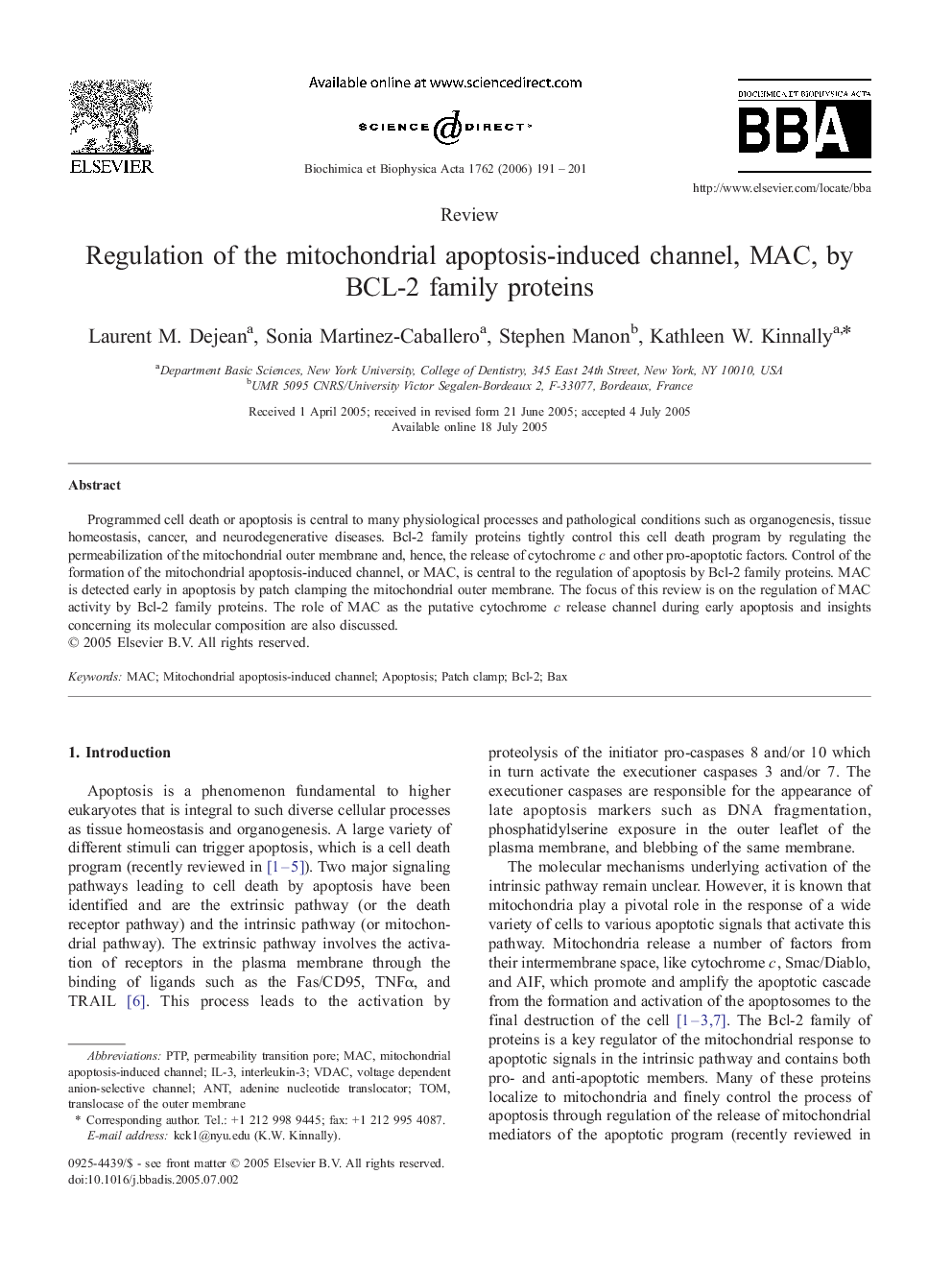| Article ID | Journal | Published Year | Pages | File Type |
|---|---|---|---|---|
| 1906015 | Biochimica et Biophysica Acta (BBA) - Molecular Basis of Disease | 2006 | 11 Pages |
Programmed cell death or apoptosis is central to many physiological processes and pathological conditions such as organogenesis, tissue homeostasis, cancer, and neurodegenerative diseases. Bcl-2 family proteins tightly control this cell death program by regulating the permeabilization of the mitochondrial outer membrane and, hence, the release of cytochrome c and other pro-apoptotic factors. Control of the formation of the mitochondrial apoptosis-induced channel, or MAC, is central to the regulation of apoptosis by Bcl-2 family proteins. MAC is detected early in apoptosis by patch clamping the mitochondrial outer membrane. The focus of this review is on the regulation of MAC activity by Bcl-2 family proteins. The role of MAC as the putative cytochrome c release channel during early apoptosis and insights concerning its molecular composition are also discussed.
